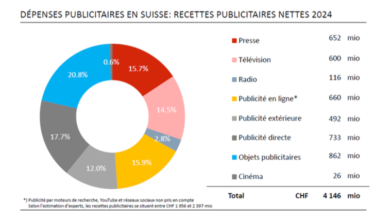The Box Wars
 It is always fun to report a revolution. Particularly when the old king was getting doddery and, frankly, a bore – and the new ruler is young, digitally savvy and chosen by the masses. What a great story it makes, and I am certainly glad to have a story on my way back from MIPCOM in Cannes. The convention has become so repetitive over the past years, I was worried I will once again wind up writing about anxious TV executives searching in vain for answers in the prisons of their minds.
It is always fun to report a revolution. Particularly when the old king was getting doddery and, frankly, a bore – and the new ruler is young, digitally savvy and chosen by the masses. What a great story it makes, and I am certainly glad to have a story on my way back from MIPCOM in Cannes. The convention has become so repetitive over the past years, I was worried I will once again wind up writing about anxious TV executives searching in vain for answers in the prisons of their minds.
But it is all over, thank god. Not that they know it yet. As in any good coup d’état – and that’s what you call a revolution from the top, don’t you? – the ruling party is not aware yet of the slow and inevitable ebb of events that’s about to shove it in the gutter. It might take a few years, and, as usual, you and I will watch it on TV. Except that this time, we will be part of the story.
PayTV has been the king of the hill for the past decades. It has populated our living rooms with hundreds of channels, which we never watch. Once in a while someone at a party will speak nostalgically of a far-off childhood, when the family only had “a few channels, but they showed good stuff”. These stories are now clearly relegated to the days before Starbucks and MTV, not to mention Tivo. We can scroll with our remote till we are blue in the face, which is not to say that finding something worth watching has become easier.
PayTV operators are engaged in a fierce competition to sell us their packages – more movies, live sports , video-on-demand. Since the millennium turn telecoms have entered the race, pushing the set-top-box wars even further: overbidding satellite operators for sports rights, throwing fortunes away on catalogues of Hollywood movies (most of which we have already seen on DVD), offering free music and unlimited phone calls, in order to sell us their box. Assuming, as always, that they know better than us what we’d like to watch, PayTV operators get especially aggressive about getting exclusive football rights, as if it were a magic weapon to guarantee them a victory in the battle for subscribers.
Quick to sense an opportunity, TV sales people – who, as we know, could not care less about the program actually reaching its audience — have focused mostly on making exclusive sales to the highest bidder in each territory.
Meanwhile, a large majority of TV viewers, who do not care about watching a local football match live (those who do can be found at a sports bar, beer in hand) have turned to the Internet. Online video ratings have been climbing through the roof over the past year, and YouTube is now the most visited site not just among video portals, but among websites in general. A number of thematic video-portals is growing , as are free audio streaming services like Spotify or Grooveshark. The common denominator to all these sites is that they are free, ad-based and do not limit our choices.
And now the big news. Quietly, over the past months, the manufacturers of TV sets started rolling out screens that connect directly to the Internet. With these new screens you don’t have to be a computer wizard, or fifteen, to connect Youtube to your TV – it already comes with it. A growing number of online entertainment sites are opening portals that can be easily navigated with a remote control. Since a few months the industry has a name for them: OTT – Over The Top services. Yes, the change is coming from the top –and, judging by the quality of YouTube’s HD videos, it has nothing to envy to traditional broadcast.
How much longer will local TV channels vie for exclusivity, when the same program is streaming worldwide on an OTT portal? How much longer will PayTV operators hold rights owners hostage, taking large chunk of their revenues because they control access to the consumer TV? Not if by creating an OTT portal a content owner can reach his audience directly.
How will this change affect the powers-that-be? At IBC this year a number of set-top-box manufacturers grumbled about the way PayTV operators seem to be oblivious to the danger at their doorstep. In Cannes I observed equally oblivious TV executives, though their eyes did flicker wearily at the mention of YouTube.
Consumer electronics companies clearly stand to gain from this change. By bundling OTT services with their screens, they will add a new revenue stream to their balance sheet.
While Youtube and Google are already at the top of the game, many smaller content portals stand a better chance of surviving on ad revenues, once the advertisers figure out how to monetize this new medium – not quite TV and not quite the Internet.
Let’s hope the big winner will be the consumer, who, for once, will be freed from the tyranny of the PayTV buyers, and of their deep conviction that they know just what he wants to watch.





